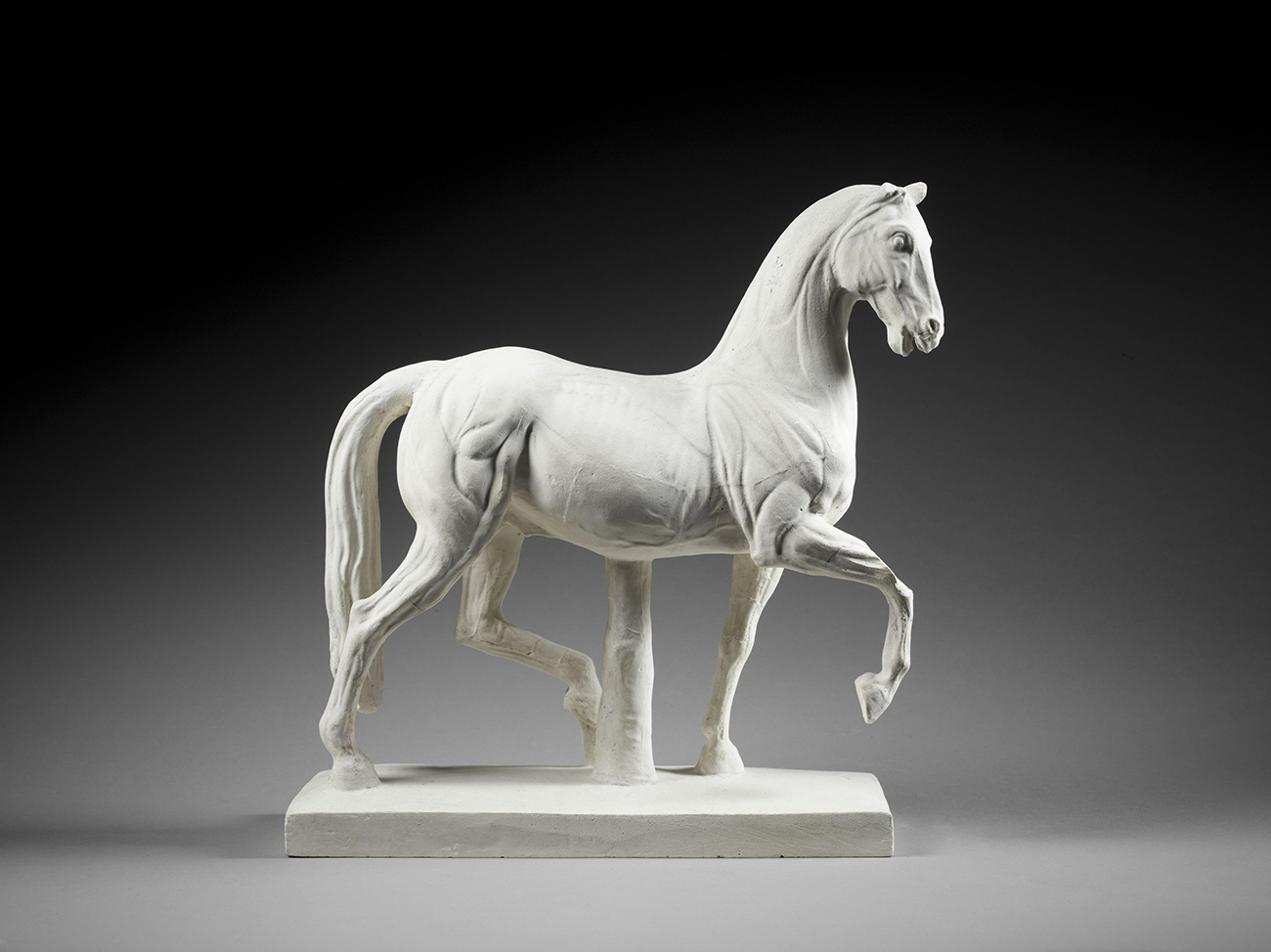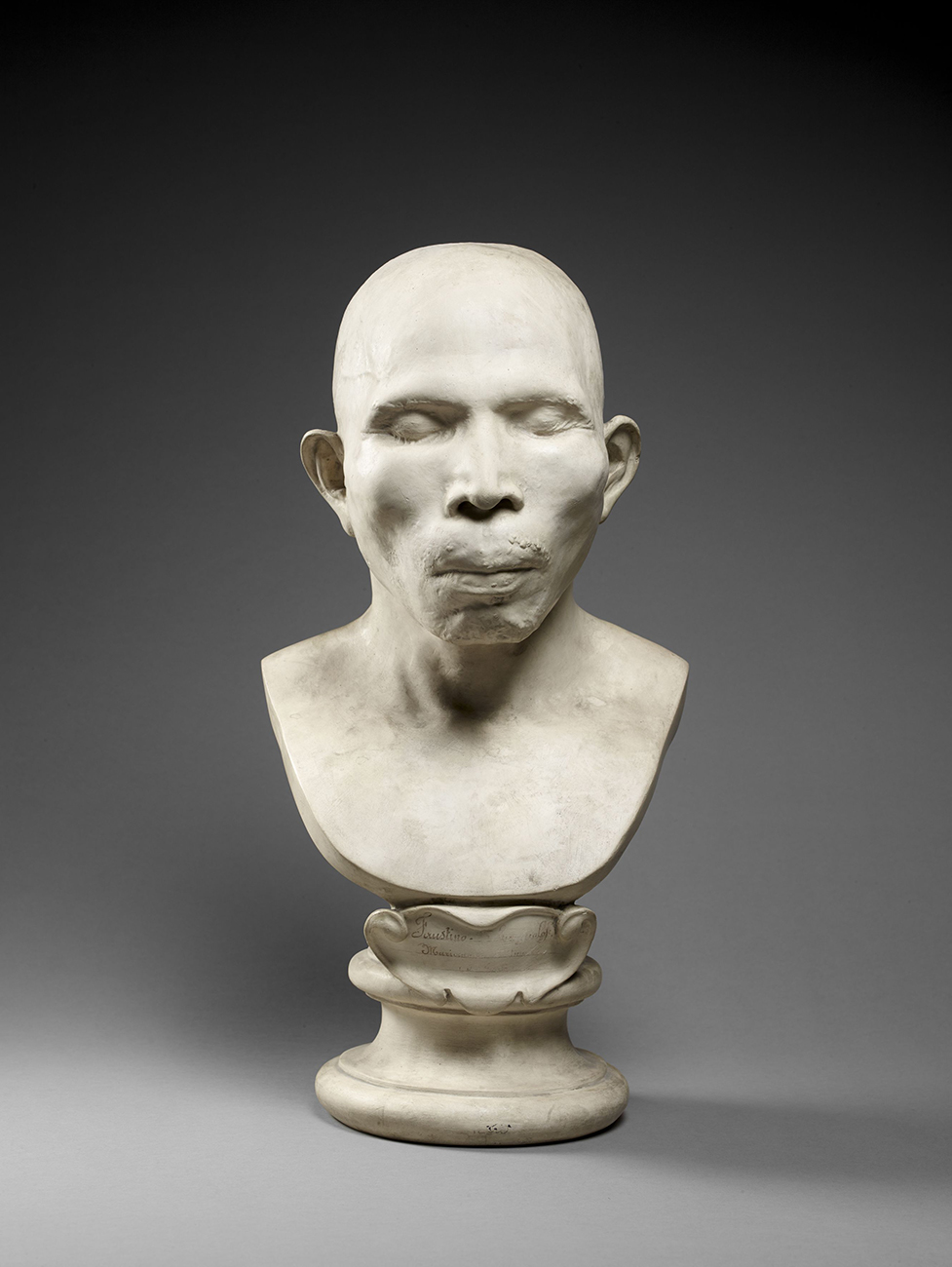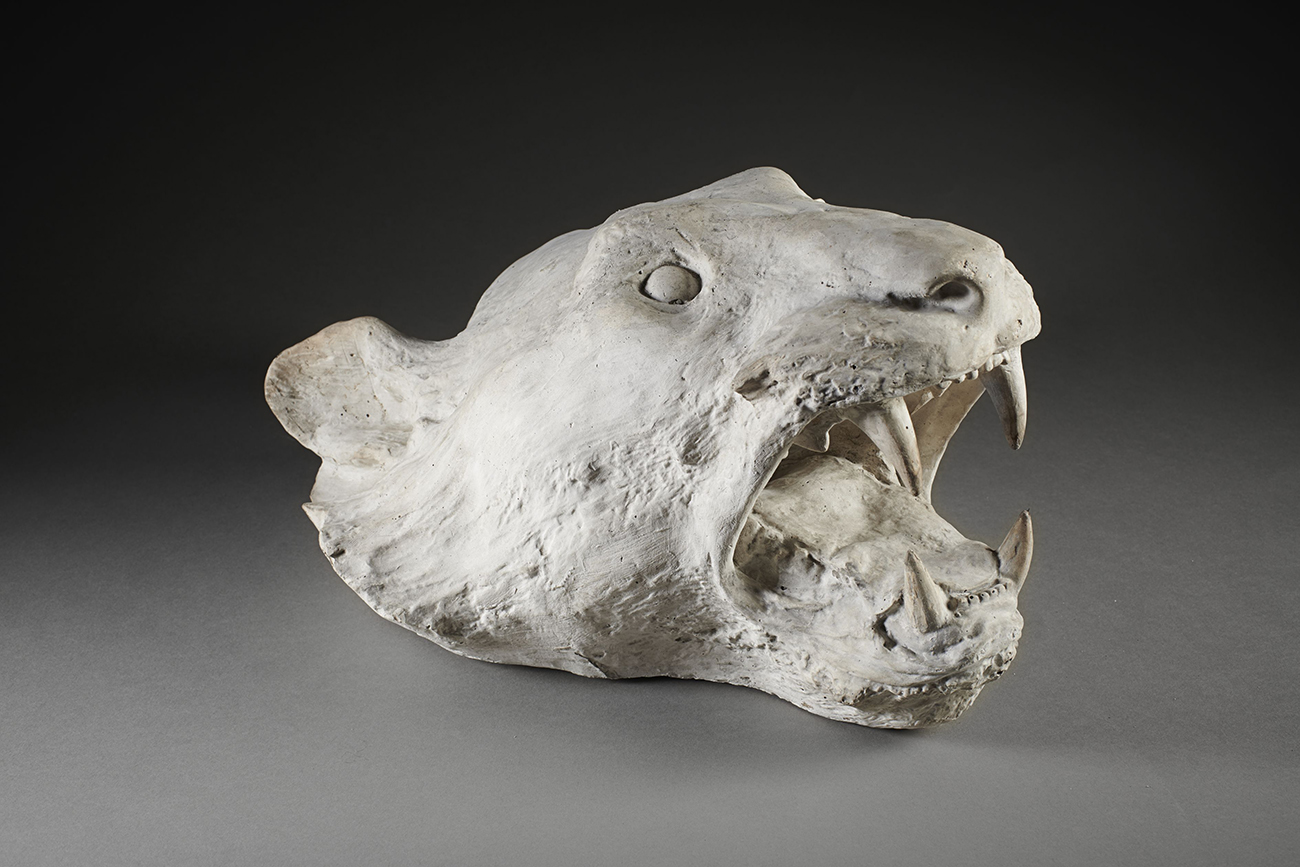Anatomical teaching, which has existed since the beginnings of the Royal Academy, took on a critical importance during the Enlightenment. In the 19th century, its development led to the private collection of écorchés, casts from nature, and bones, housed near educational institutions. This collection, which includes iconic pieces such as the great cast bronze écorché given to the Academy by Jean Antoine Houdon in 1792, grew considerably through donations, such as that made in 1825 by the surgeon Jean Joseph Sue, a professor at the school, who had a very well-regarded anatomical cabinet, but also through major acquisitions, such as the animal cast from nature bought by the state from the estate of the renowned animal sculptor Antoine Louis Barye (1876). It has also been enhanced by educational exercises, such as casts from nature of dissections made at the school and the prize-winning works from the anatomical competitions established in 1855. Today, the sculptures, casts from nature, and “naturalia” (bones, stuffed and mummified animals), are kept in a separate space, above the morphology lecture theater, called Galerie Huguier, named after the anatomy professor Pierre Charles Huguier who created the collection. It is often sought after for teaching purposes, and so still maintains a strong educational impact.
Jean Antoine Houdon, Écorché, bras droit tendu au-dessus de la tête, 1792, Bronze, 192 x 70 x 80 cm

Alexandre Desachy, Cheval écorché, moulage d’un modèle attribué à Michel Ange, XIXe siècle, Plâtre, 24,6 x 9,2 x 25,3 cm

Écorché, moulage d’un modèle attribué à Michel Ange, XIXe siècle, Plâtre, 25 x 12,3 x 15 cm

Edme Bouchardon, Écorché, vers 1760, Plâtre, moulage de dissection et métal, 208 x 70 x 60 cm

Jean Antoine Houdon, Écorché, bras droit tendu au-dessus de la tête, 1792, Bronze, 192 x 70 x 80 cm

Jules Talrich, Écorché allongé sur le dos, 1867, Plâtre coloré, moulage sur nature, 200 x 80 x 45 cm

Paul Richer, Buste de Descartes reconstitué à partir du moulage de son crâne, 1913, Plâtre patiné, 44 x 40 x 28 cm

Pierre Marie Alexandre Dumoutier, Buste ethnologique, 1838, Plâtre, moulage sur nature, 52 x 27 x 21 cm

Main droite de danseuse balinaise en hyper-extension, début du XXe siècle, Plâtre, moulage sur nature, 36 x 14 x 15 cm

Maison Tramond, Tête de tigre, gueule ouverte, seconde moitié du XIXe siècle, Plâtre, moulage sur nature, 43 x 38 x 26 cm

Autel macabre, fin du XVIIIe siècle, Os, bois, métal et verre, 48,4 x 55,7 x 24 cm



